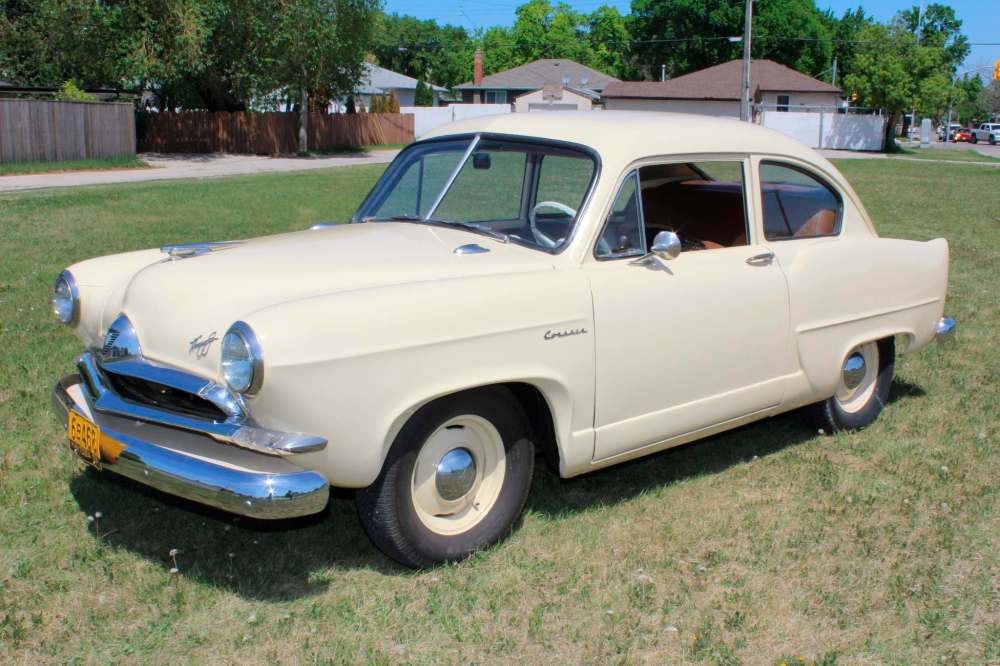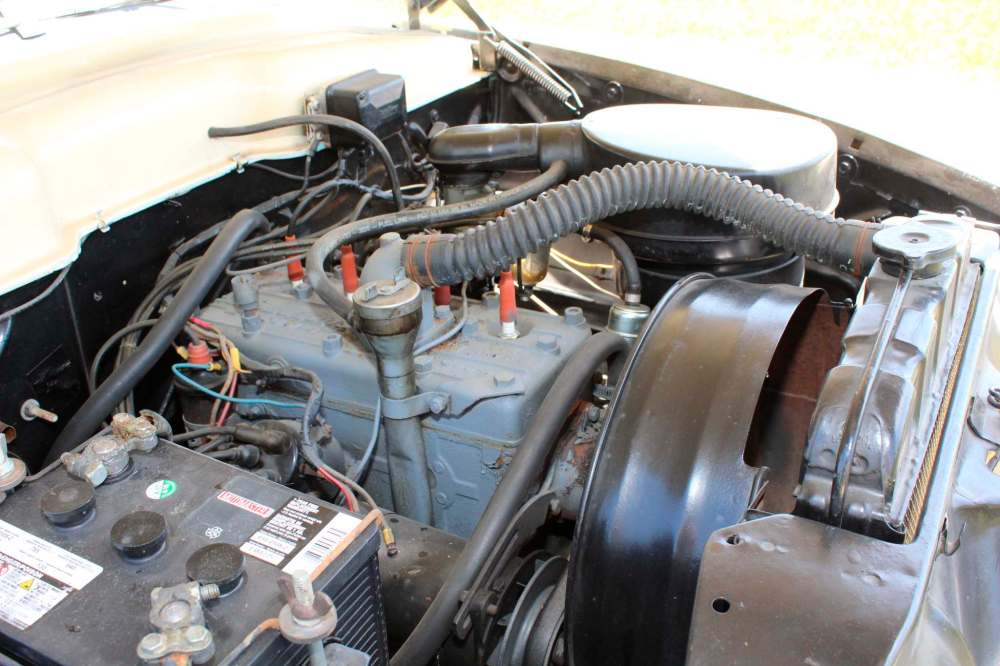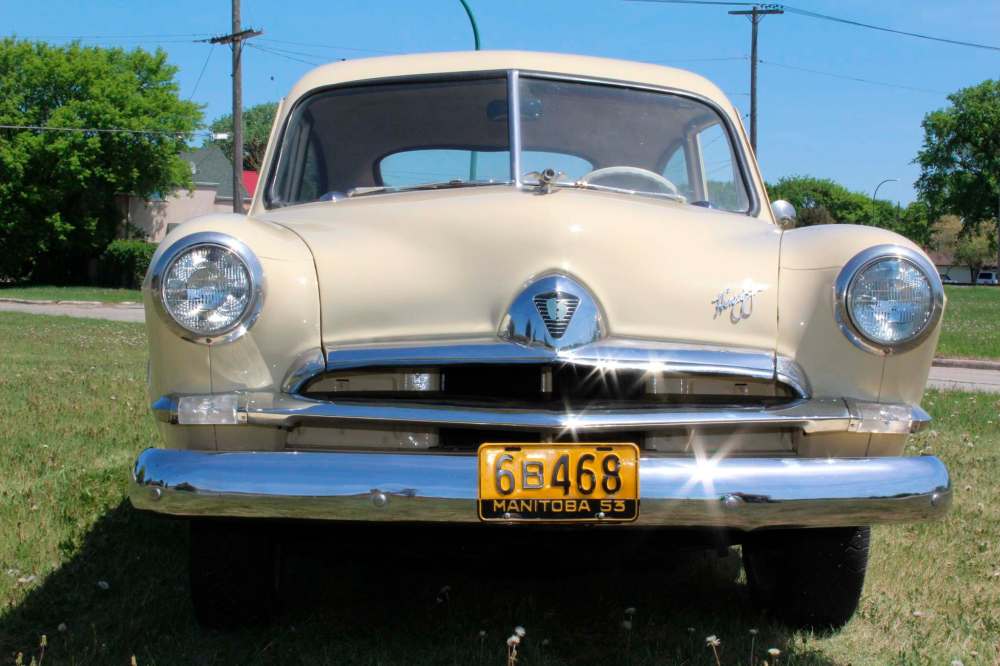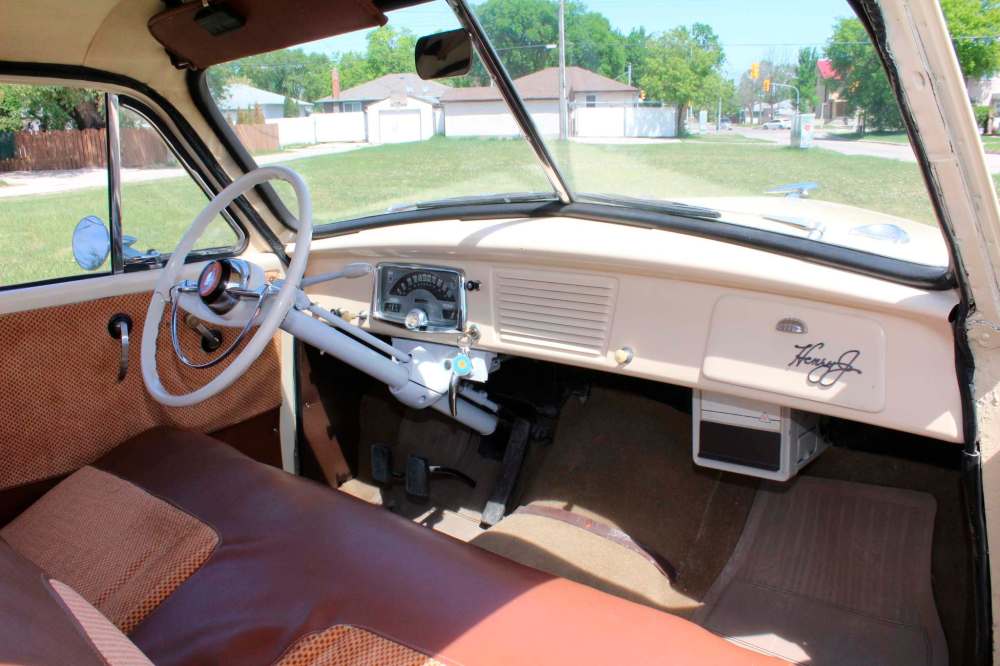Henry J not too shabby for an impulse buy
Yesterday's 'bare-bones' offering is today's special ride
Advertisement
Read this article for free:
or
Already have an account? Log in here »
To continue reading, please subscribe:
Monthly Digital Subscription
$1 per week for 24 weeks*
- Enjoy unlimited reading on winnipegfreepress.com
- Read the E-Edition, our digital replica newspaper
- Access News Break, our award-winning app
- Play interactive puzzles
*Billed as $4.00 plus GST every four weeks. After 24 weeks, price increases to the regular rate of $19.00 plus GST every four weeks. Offer available to new and qualified returning subscribers only. Cancel any time.
Monthly Digital Subscription
$4.75/week*
- Enjoy unlimited reading on winnipegfreepress.com
- Read the E-Edition, our digital replica newspaper
- Access News Break, our award-winning app
- Play interactive puzzles
*Billed as $19 plus GST every four weeks. Cancel any time.
To continue reading, please subscribe:
Add Free Press access to your Brandon Sun subscription for only an additional
$1 for the first 4 weeks*
*Your next subscription payment will increase by $1.00 and you will be charged $16.99 plus GST for four weeks. After four weeks, your payment will increase to $23.99 plus GST every four weeks.
Read unlimited articles for free today:
or
Already have an account? Log in here »
Hey there, time traveller!
This article was published 08/06/2018 (2683 days ago), so information in it may no longer be current.
The Kaiser-Frazer Corporation introduced the Henry J in 1951. It was envisioned as an economy entry vehicle for mass marketing and drew on the styling of the corporation’s full-size line.
Named after its corporate chairman, Henry John Kaiser, it was being offered as a basic transportation vehicle with few options. Some say Kaiser was stubborn, as he thrust the car into the market as a bare-bones offering when most buyers were looking for something more opulent.
Advertised as a five-passenger model riding on a 100-inch wheelbase, it featured either an L-Head four-cylinder with three-speed manual or optional six-cylinder engine with three-speed manual or overdrive transmission. Other amenities included an optional heater and defroster, radio, directional signals, full wheel covers or trim rings and bumper guards.

With base-model pricing starting at US$1,363, the 2,300-pound car was a bargain. Styling was unique, and it did offer room for the family with a full trunk and with fuel economy in the 30 miles-per-gallon range, it was economical.
Reviewed as everything from cute to misproportioned, the Henry J had only a four-year run, producing just over 125,000 units. Model names changed over the years. Initially offered in 1951 as Standard and Deluxe, it later became Vagabond and Corsair. Aside from some minor trim changes, its look varied little and the bolt-together construction of body panels often left lead seams uneven and visible under the painted surface.
For Tom Dudych of Winnipeg, his 1953 Henry J Corsair could be called an impulse buy. “I saw it advertised in 2001 just north of Winnipeg and it was just an interesting vehicle, so I took a look at it,” Dudych says. The owner had wanted to hotrod the car, but time constraints didn’t allow for it, so he put it up for sale. Dudych and his brother Jim have a small, eclectic collection of vehicles and the Henry J seemed to be a good fit, so he purchased it.
The car was complete, apart from the rear window being out, awaiting a seal replacement. Originally, the car was turquoise blue, but had been repainted beige and the interior upholstery updated to a brown vinyl and beige cloth.
The car is solid, with no rust and has only travelled 120,700 kilometres since it left the factory. The delivery region on the vehicle identification plate and serial number loosely identify the Georgia or Alabama area as its original point of sale when new.

Powering the Henry J is the standard L-Head, in-line four-cylinder engine. Displacing 134.2 cubic-inches with a 7:1 compression ratio, it produces 68 horsepower at 4,000 rpm and is backed by a column-mounted three-speed manual transmission. Optional equipment is sparse, including only the heater and defroster unit.
Going over the car, Dudych found the brakes were new and there were no issues with the factory suspension and steering. To get the car running properly and roadworthy, Dudych rebuilt the carburetor, tuned-up the engine, installed turn signal indicators, a new sending unit for the fuel tank, replaced the rear window seal and added a new set of 15-inch radial tires. To clean the car up, he had a friend repaint it in a similar beige colour called French vanilla and the House of Silver replated the chrome grille surround.
While Dudych admits he hasn’t driven his Henry J very much, he always gets the thumbs-up from people when he does.
“I have thought of maybe selling it at times, but the reaction I get from people when they see it and the questions they ask about it, really makes it special,” Dudych says.
Of the 17,505 Henry J models produced in 1953, there were 9,333 Corsair models equipped with the four-cylinder engine, with the balance carrying the 80-horsepower “Supersonic Six” engine.

During 1952 and ’53, Sears would also offer the Henry J through their catalogue sales. Renamed the Allstate, it had only a minor change to the grille cavity, adding two horizontal chrome bars. There were also special Allstate name scripts affixed to the car and they all came equipped with Allstate tires and batteries. All other standard Henry J features and optional equipment were available. Introduced in October 1952, Sears cancelled the Allstate in July 1953 over poor sales, having only sold 2,689 units.
For 1954, most Henry J models were carry-overs with no changes from the ’53 model other than the serial number. Production of the Henry J ceased at Kaiser on Nov. 20, 1953, with only 1,119 units built for ’54. In its four-year availability, a grand total of 206,803 units were built, including the Allstate cars.
57ford@mymts.net



